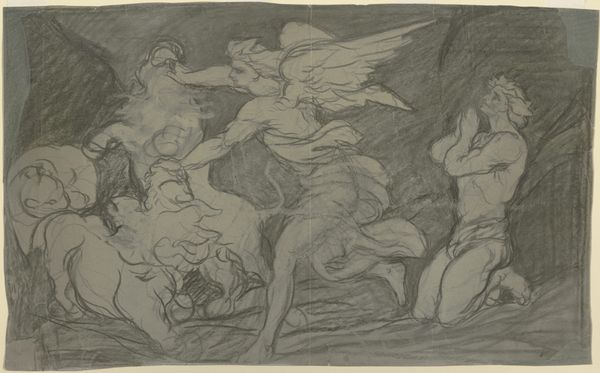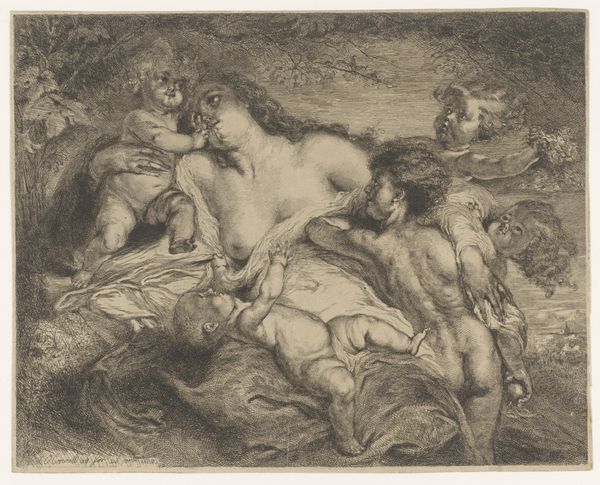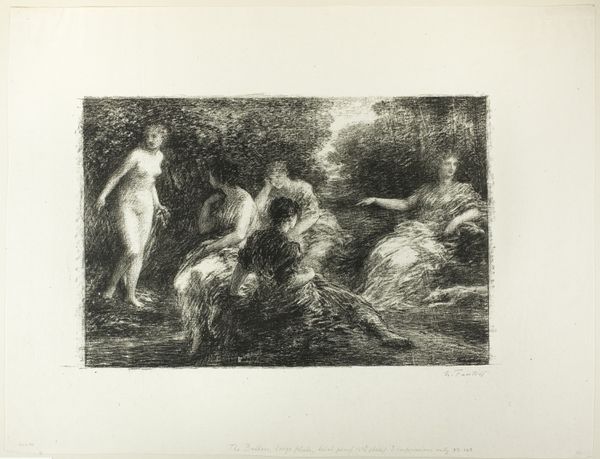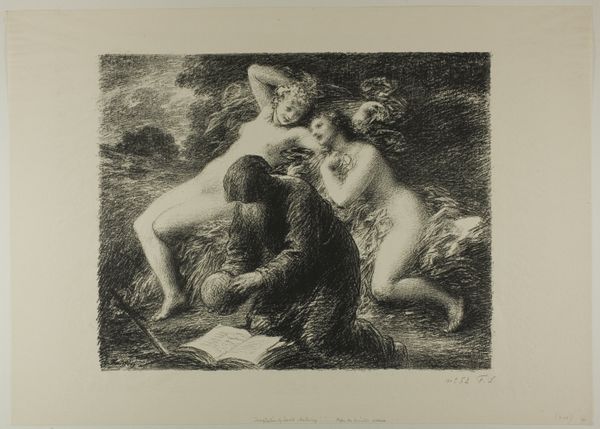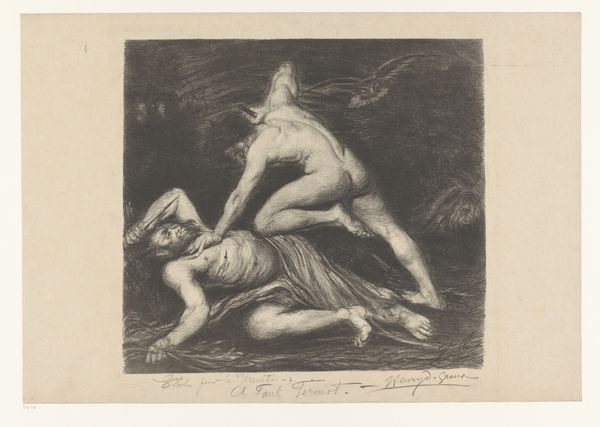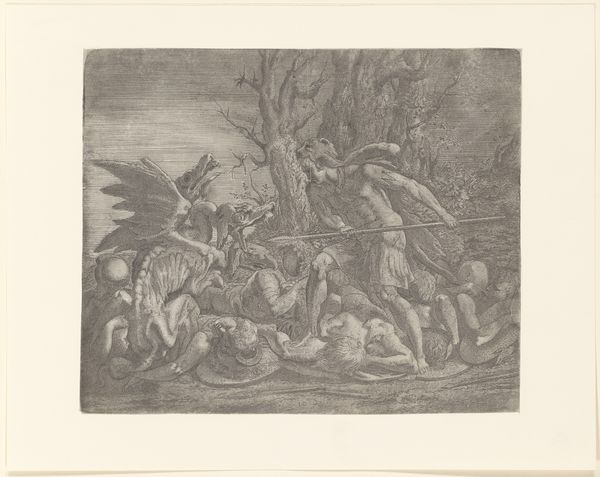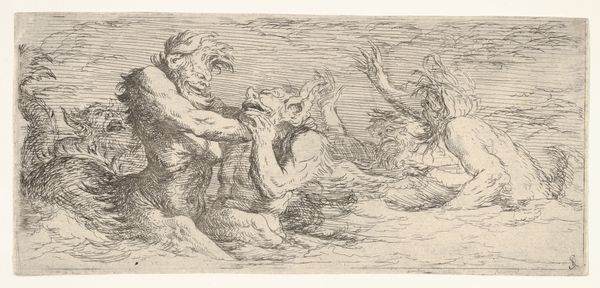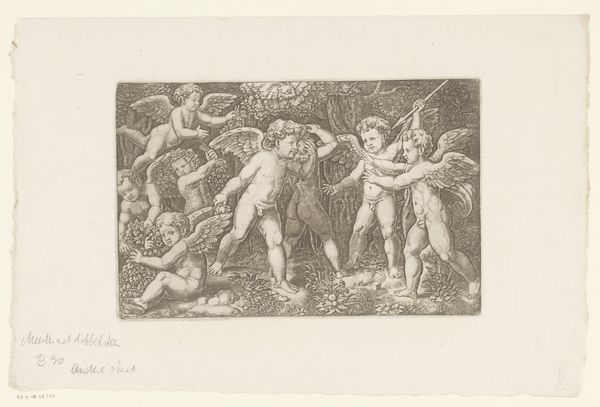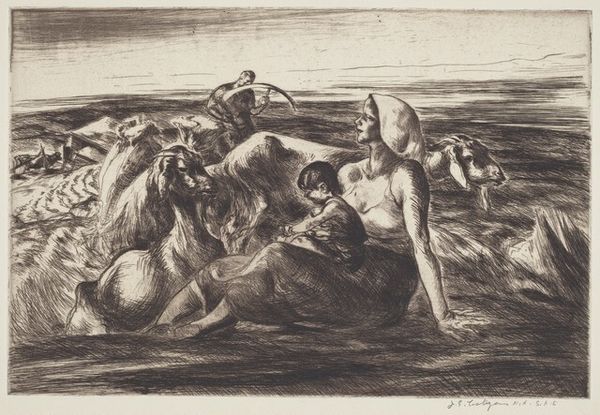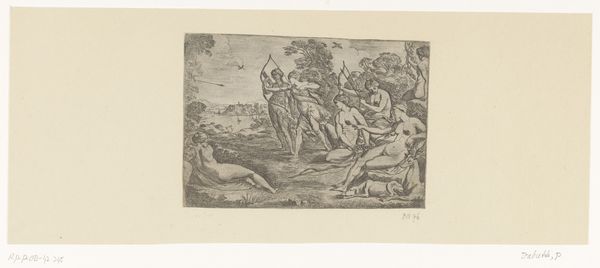
drawing, charcoal
#
drawing
#
charcoal drawing
#
figuration
#
symbolism
#
charcoal
#
nude
Copyright: Public Domain: Artvee
Editor: We're looking at "Ballet du Troyens," a charcoal drawing by Henri Fantin-Latour, created in 1893. I’m struck by how dreamlike it is – almost like a scene emerging from a mist. What is your perspective on this? Curator: Consider the visual construction. Note the dynamic arrangement of figures, how the artist uses light and shadow to create depth and movement. It appears that the artist plays with form and void. Where do you find visual contrast? Editor: Well, the central figure is much brighter and more defined than the others, drawing the eye immediately. The figures on the right almost blend into the background. Is that deliberate? Curator: It is the deliberate application of value and texture that concerns us. The interplay between the foreground and background serves a purpose. How would you describe the composition and spatial organization? Does the charcoal technique offer a flattening or a dimensionality to the surface? Editor: I see. The charcoal technique, especially the smudging, seems to flatten some areas while giving depth to others, creating an interesting tension between flatness and dimensionality. I hadn't considered that. The dynamism you mentioned is apparent in the movement and postures of the figures, enhanced by this contrasting treatment. Curator: Precisely. Now, consider how the figures interact. Do they create a unified scene? What meaning arises? What are your feelings toward the tonal modulations? Editor: Now I see how Fantin-Latour skillfully used visual elements to construct this atmosphere. Thank you for directing my eye! Curator: It’s a testament to the evocative power of form itself, as an aesthetic object.
Comments
No comments
Be the first to comment and join the conversation on the ultimate creative platform.

